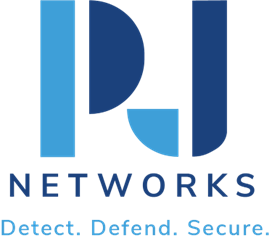How to Build A Cybersecurity Awareness Program for Your Business
Cyber threats, being increasingly maneuvered and sophisticated in the current digital age, are an essential point of security awareness for any business. You cannot overemphasize the importance of educating employees about security best practices. A good cybersecurity awareness program puts your employees in the best position to be a strong front line of defense against these evolving threats. In this blog, we are going to discuss why cybersecurity awareness is important, take you through steps to create an awareness program and outline major topics for employee training as well as how to measure your program.
Why is Cybersecurity Awareness Important?
No matter the size or category of your business, you have a likely chance to become a cyber criminal’s next target. There have been a few high-profile data breaches lately that have made the news and cost companies millions of dollars, not to mention the damage they suffered to reputation —sometimes irreparably, so security education and awareness must go to each department.
- Good training helps to prevent data breaches, as personnel become less likely to be tricked by phishing attacks, malicious downloads or any other cyber threats.
- Compliance with Regulations: There are legal standards and regulations on data protection, which need to be adhered by many industries. An in-depth awareness program can promote compliance, reducing the risk of expensive litigation.
- Protection of Company Reputation: A data breach can ruin a company’s reputation. Cybersecurity also preserves a relationship with clients and partners by demonstrating a commitment to the security of their assets.
- Operational Contingency: Most cyber monsters are out for hunt. Such risks can be minimized by conducting awareness programs which help in business continuity.
Awareness Program Building Steps
Constructing a cybersecurity awareness program from scratch requires careful, top-down deliberation. Take the following steps to design a great program.
Key Areas to Address in Employee Training
Here are few basic topics we should include in a successful employee security training program. Key focus areas include:
- Free Training – up to 1.5 AP creditNote: This is training for those of you who are IT security people and will have the responsibilities for alerting on Phishing emails.) Show what the most typical red flags are, and describe what are some consequences of falling for such scams.
- Protecting Passwords: Make sure your employees knows how to create a secure and strong password and never to forget about the importance of using trusted password managers. Underline the security risks associated with password reuse across multiple sites.
- Data Protection: Employees need to truly understand how to handle sensitive data by addressing it securely. And Cover Data Encryption, Secure File Sharing and Desktop Clean Desk Policies.
- Securing Remote Work: As remote work becomes the norm, it’s vital that employees understand how to secure their home networks and devices.
- Incident Reporting — Ask employees to report any immediately denote thing unverifiable. Describe how and why rapid reporting is critical to threat mitigation.
Measuring Awareness Program Effectiveness
A cybersecurity awareness program must be continuously measured for its effectiveness to determine if it is still relevant. Here are some techniques for this:
- Assessments and Quizzes: Test employee knowledge with quizzes and assessments on a regular basis. Use this to find what needs more focus or work.
- Monitoring and Metrics — Measure key metrics (e.g., decrease in phishing incidents, increase in reported incidents, engagement levels during training sessions.
- Feedback and surveys — Ask employees for their opinions, to see if the program provides value or what areas can be improved upon. Refine and adapt the program as necessary using data from which students are able to benefit, and make appropriate changes.
- Compliance Rates – The frequency at which employees abide by security protocols and policies as they are presented in the program.
- Live Fire Exercises: This includes simulated attacks to see how employees would react in a real situation (like phishing tests).
To best position your business to fight against cyber threats and minimize the risk of a breach: educate your employees and create a cybersecurity culture. It is focus on enabling, not just informing users that really matter for a security awareness program and the process outline goes well with that. The same is true of budgeting for an action management system, only this tool does more than just provide you with a safeguard. It could actually make an investment in the security and effectiveness of your business.
So in the end, develop a culture of cybersecurity awareness at your workplace. After all, the most basic defense against these cyber attacks is a well informed and proactive workforce. Organized crime will similar every ongoing year to your dissidents in which they progressed with Shenanigans while you pick up your faces and mend the situations, so must you evolve with the threats continuing commitment to security education and slighting an employee security training for an ever refined program.
